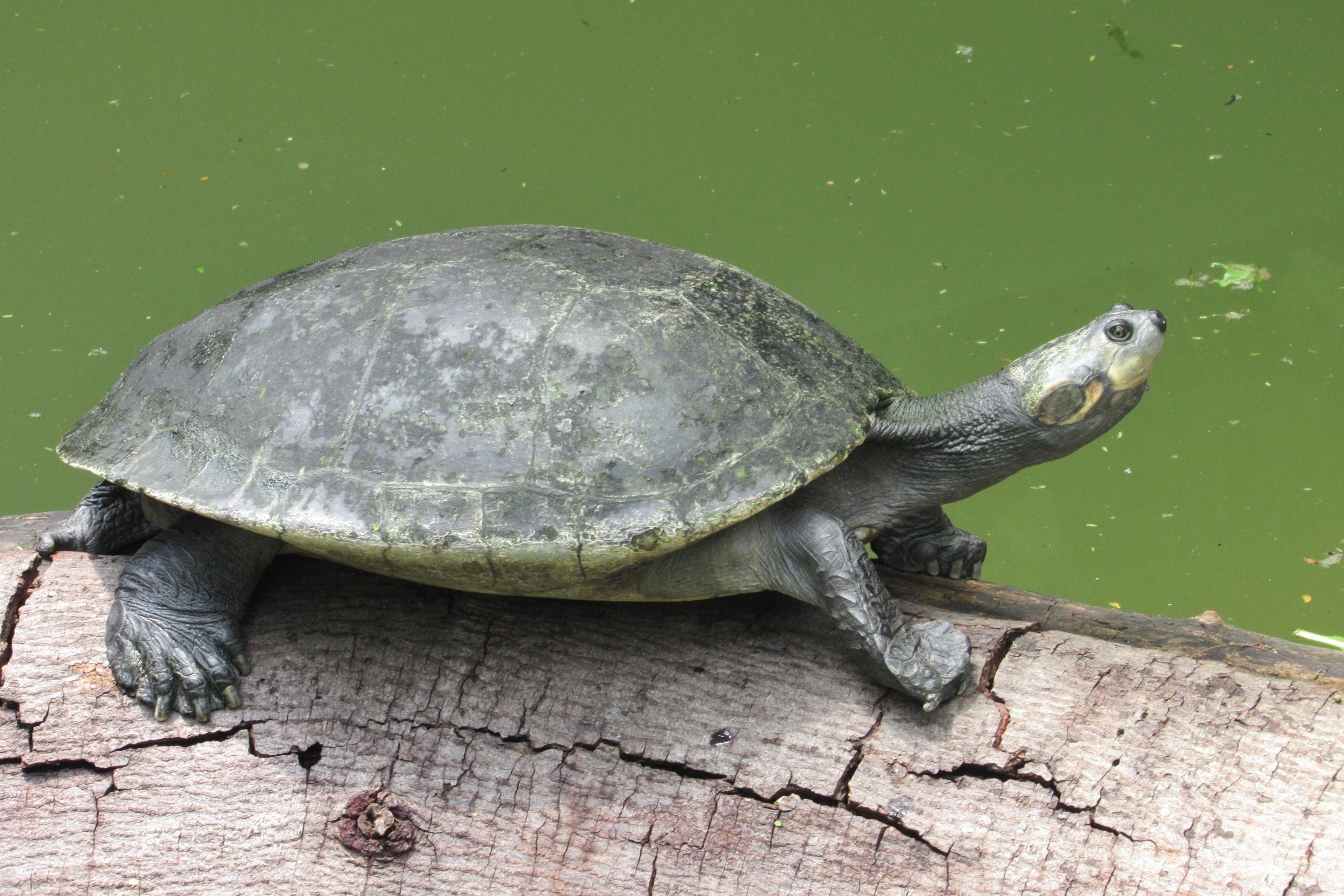Arrau turtle
(Podocnemis expansa)

Description
The Arrau turtle (Podocnemis expansa), also known as the South American river turtle, giant South American turtle, giant Amazon River turtle, Arrau sideneck turtle, Amazon River turtle or simply the Arrau, is the largest of the side-neck turtles (Pleurodira) and the largest freshwater turtle in Latin America. The species primarily feeds on plant material and typically nests in large groups on beaches. Due to hunting of adults, collecting of their eggs, pollution, habitat loss, and dams, the Arrau turtle is seriously threatened. Arrau turtles are found in the Amazon, Orinoco and Essequibo basins in Brazil, Bolivia, Peru, Ecuador, Colombia, Venezuela and Guyana. On occasion, typically after floods, individuals turn up in Trinidad. They are found in deep rivers, ponds, freshwater lagoons and flooded forest in white-, black- and clear-water. Arrau turtles can reach up to 90 kg (200 lb) in weight and the carapace length is up to 1.07 m (3.5 ft). Most individuals are considerably smaller with the average adult female having a carapace length of 64–71 cm (2.1–2.3 ft) and the average adult male 40–50 cm (1.3–1.6 ft). In addition to an overall smaller size, males can be recognized by their longer tail and straighter carapace than the females. Arrau turtles are brown, gray or olive-green, but the exact color varies depending on the algae growing on the carapace. Adult Arrau turtles feed almost entirely on plant material such as fruits, seeds, leaves, legumes and algae, but may also take freshwater sponges, eggs and carcasses of dead animals (such as dead fish). Captives have been recorded feeding on meat. Juveniles feed on fish and plant material. The species is mainly active during the day. When nearing the breeding season, Arrau turtles migrate to certain sites where the eggs are laid. In some locations nesting occurs in large groups on beaches, which reduces the risk posed by predators. Some beaches have as many as 500 nesting females. Mating occurs in the water. During and just before the nesting season the species frequently basks, typically in groups. It is suspected that the additional heat accelerates the ovulation in the females. At other times the species is generally not found on land. When on land, it is usually very shy and retreats to the water at the slightest hint of danger.
Taxonomic tree:







